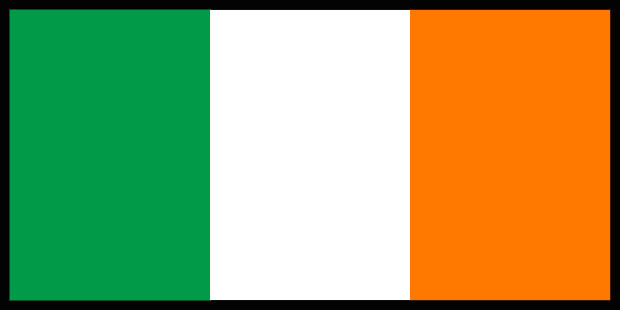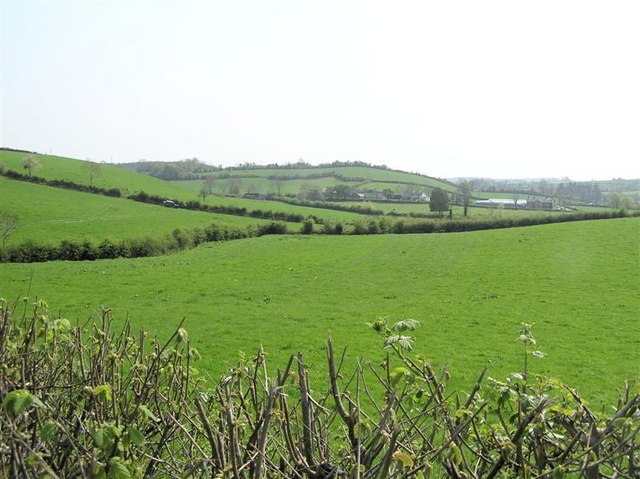|
Killeeshil Ambush
The Killeeshil ambush took place on 15 July 1994, when an armour plated vehicle of the Royal Ulster Constabulary (RUC) was intercepted by a tipper lorry driven by a Provisional IRA active service unit from the East Tyrone Brigade and riddled with automatic rifle fire while travelling on the Dungannon Road at Killeeshil crossroads, in southern County Tyrone, Northern Ireland. Three members of the RUC were wounded, as well as a Sinn Féin councillor from Clones, Republic of Ireland, who by chance had been arrested earlier at the Irish border and was being transported to Belfast. An elderly female motorist was also wounded. The action occurred a few weeks before the IRA ceasefire of August 1994. Background Expectations regarding a Provisional IRA permanent ceasefire were high by mid-1994; that decision would have the potential of moving the political process forward, which could lead to an everlasting peace in the region. The situation on the ground, however, revealed that the IRA ... [...More Info...] [...Related Items...] OR: [Wikipedia] [Google] [Baidu] |
The Troubles
The Troubles () were an ethno-nationalist conflict in Northern Ireland that lasted for about 30 years from the late 1960s to 1998. Also known internationally as the Northern Ireland conflict, it began in the late 1960s and is usually deemed to have ended with the Good Friday Agreement of 1998. Although the Troubles mostly took place in Northern Ireland, at times violence spilled over into parts of the Republic of Ireland, England, and mainland Europe. Sometimes described as an Asymmetric warfare, asymmetric or Irregular warfare, irregular war or a low-intensity conflict, the Troubles were a political and nationalistic struggle fueled by historical events, with a strong Ethnic conflict, ethnic and sectarian dimension, fought over the Partition of Ireland, status of Northern Ireland. Unionism in Ireland, Unionists and Ulster loyalism, loyalists, who for Plantation of Ulster, historical reasons were mostly Ulster Protestants, wanted Northern Ireland to remain within the United Ki ... [...More Info...] [...Related Items...] OR: [Wikipedia] [Google] [Baidu] |
Belfast
Belfast (, , , ; from ) is the capital city and principal port of Northern Ireland, standing on the banks of the River Lagan and connected to the open sea through Belfast Lough and the North Channel (Great Britain and Ireland), North Channel. It is the second-largest city in Ireland (after Dublin), with an estimated population of in , and a Belfast metropolitan area, metropolitan area population of 671,559. First chartered as an English settlement in 1613, the town's early growth was driven by an influx of Scottish people, Scottish Presbyterian Church in Ireland, Presbyterians. Their descendants' disaffection with Kingdom of Ireland, Ireland's Protestant Ascendancy, Anglican establishment contributed to the Irish Rebellion of 1798, rebellion of 1798, and to the Acts of Union 1800, union with Kingdom of Great Britain, Great Britain in 1800—later regarded as a key to the town's industrial transformation. When granted City status in the United Kingdom#Northern Ireland, city s ... [...More Info...] [...Related Items...] OR: [Wikipedia] [Google] [Baidu] |
County Fermanagh
County Fermanagh ( ; ) is one of the thirty-two counties of Ireland, one of the nine counties of Ulster and one of six counties of Northern Ireland. The county covers an area of and had a population of 63,585 as of 2021. Enniskillen is the county town and largest in both size and population. Fermanagh is one of four counties of Northern Ireland to have a majority of its population from a Catholic background, according to the 2011 census. Geography Fermanagh spans an area of 1,851 km2 (715 sq; mi), accounting for 13.2% of the landmass of Northern Ireland. Nearly a third of the county is covered by lakes and waterways, including Upper and Lower Lough Erne and the River Erne. Forests cover 14% of the landmass (42,000 hectares). It is the only county in Northern Ireland that does not border Lough Neagh. The county has three prominent upland areas: * the expansive West Fermanagh Scarplands to the southwest of Lough Erne, which rise to about 350m, * the Sl ... [...More Info...] [...Related Items...] OR: [Wikipedia] [Google] [Baidu] |
County Monaghan
County Monaghan ( ; ) is a Counties of Ireland, county in Ireland. It is in the Provinces of Ireland, province of Ulster and is part of Border Region, Border strategic planning area of the Northern and Western Region. It is named after the town of Monaghan. Monaghan County Council is the Local government in the Republic of Ireland, local authority for the county. The population of the county was 65,288, according to the 2022 census. The county has existed since 1585 when the Mac Mathghamhna rulers of Airgíalla agreed to join the Kingdom of Ireland. Following the 20th-century Irish War of Independence and the signing of the Anglo-Irish Treaty, Monaghan was one of three Ulster counties to join the Irish Free State rather than Northern Ireland. Geography and subdivisions County Monaghan is the fifth-smallest of the Republic's 26 counties by area, and the fourth smallest by population. It is the smallest of Ulster's nine counties in terms of population. Baronies * Cremorne (ba ... [...More Info...] [...Related Items...] OR: [Wikipedia] [Google] [Baidu] |
Clones, County Fermanagh
Clones is a civil parishes in Ireland, civil parish located in the Barony (country subdivision), barony of Clankelly in County Fermanagh, Northern Ireland, and in County Monaghan, Republic of Ireland. on Townlands, retrieved 3 October 2015. See also *Clones, County MonaghanReferences Civil parishes of County Fermanagh {{Monaghan-geo-stub ...[...More Info...] [...Related Items...] OR: [Wikipedia] [Google] [Baidu] |
Westland Lynx
The Westland Lynx is a British multi-purpose twin-engined military helicopter designed and built by Westland Helicopters at its factory in Yeovil. Originally intended as a utility craft for both civil and naval usage, military interest led to the development of both battlefield and naval variants. The Lynx went into operational usage in 1977 and was later adopted by the armed forces of over a dozen nations, primarily serving in the Utility helicopter, battlefield utility, anti-tank warfare, anti-armour, search and rescue and anti-submarine warfare roles. The Lynx is a fully aerobatics, aerobatic helicopter with the ability to perform loops and rolls. In 1986, a specially modified Lynx set the current Fédération Aéronautique Internationale's official airspeed record for helicopters (category excludes compound helicopters) at , which remains unbroken as of January 2022. [...More Info...] [...Related Items...] OR: [Wikipedia] [Google] [Baidu] |
Fivemiletown
Fivemiletown is a village and townland in County Tyrone, Northern Ireland. It is 16 miles (26 km) east of Enniskillen and 26 miles (43 km) west-south-west of Dungannon, on the A4 road (Northern Ireland), A4 Enniskillen-to-Dungannon road. Fivemiletown's population was 1,243 at the 2011 United Kingdom census, 2011 census. This article contains quotations from this source, which is available under th Open Government Licence v3.0 © Crown copyright. The village is most famous for its creamery, which was begun as a cooperative in 1898 by Hugh de Fellonburg Montgomery. Fivemiletown Creamery originally made butter and milk, but now makes cheeses for the British and Irish market, and for export across Europe and North America. Name Fivemiletown's name comes from its location five Irish miles (1 Irish mile = 1.27 statute miles = 2044 m) from its nearest neighbours: Clogher, Brookeborough and Tempo, County Fermanagh, Tempo. The original Irish name of the townland of Fivemileto ... [...More Info...] [...Related Items...] OR: [Wikipedia] [Google] [Baidu] |
Pomeroy, County Tyrone
Pomeroy is a small village and civil parish in County Tyrone, Northern Ireland. It is in the townland of Cavanakeeran, about from Cookstown, from Dungannon and from Omagh. The 2011 Census recorded a population of 788 people. This article contains quotations from this source, which is available under th Open Government Licence v3.0. © Crown copyright. Pomeroy is atop a large hill that dominates the surrounding countryside. From the Cookstown end, the road through the village gradually climbs a gradient up to a village square, The Diamond. The village is surrounded by the Pomeroy Hills. The surrounding countryside is a mixture of moorland and bog land. Stone age and Bronze Age cairns dot the landscape. Pomeroy is the closest settlement to the geographical centre of Ulster. History At the end of the 17th century there was no village in this area, just an extensive forest. In the plantation of Ulster James I and VI granted eight townlands to Sir William Parsons, Surveyor Ge ... [...More Info...] [...Related Items...] OR: [Wikipedia] [Google] [Baidu] |
Cookstown
Cookstown (, ) is a town in County Tyrone, Northern Ireland. It is the fourth-largest town in the county and had a population of 12,546 in the 2021 census. It, along with Magherafelt and Dungannon, is one of the main towns in the Mid-Ulster council area. It was founded around 1620 when the townlands in the area were leased by an English ecclesiastical lawyer, Dr. Alan Cooke, from the Archbishop of Armagh, who had been granted the lands after the Flight of the Earls during the Plantation of Ulster. It was one of the main centres of the linen industry west of the River Bann, and until 1956 the flax-related processes of spinning, weaving, bleaching and beetling were carried out in the town. History In 1609 land was leased to an English ecclesiastical lawyer, Dr Cooke, who fulfilled the covenants entered in the lease by building houses on the land. In 1628, King Charles I granted Letters Patent to Cooke permitting the holding of a twice-weekly market for livestock and f ... [...More Info...] [...Related Items...] OR: [Wikipedia] [Google] [Baidu] |





